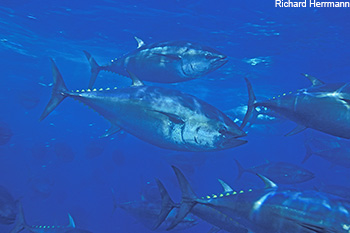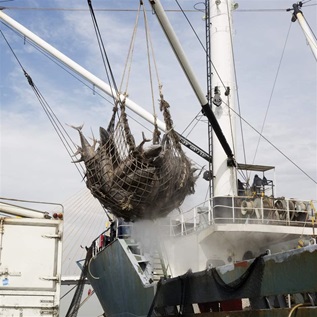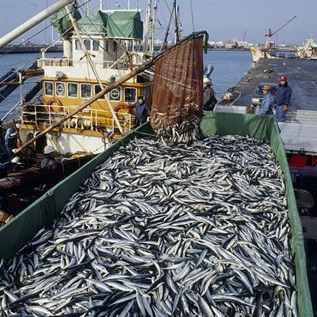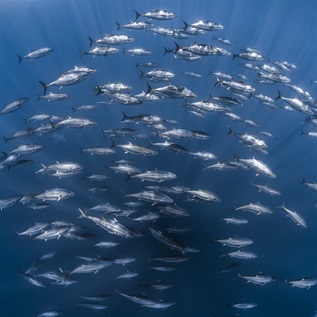How Much Will the Last Pacific Bluefin Tuna Cost?

A single 230-kilogram (507-pound) Pacific bluefin tuna sold in Tokyo on Jan. 5 for approximately $70,000 (7.36 million yen).
The price—and the pomp and circumstance that surrounds the much-anticipated first auction of the new year—overshadows the reality that this species is sliding toward extinction and begs the question: How much will we pay for the last Pacific bluefin tuna?
Associated Press: Price of Bluefin Tuna Nosedives at Tokyo Auction
The plight of Pacific bluefin received long overdue attention when the International Scientific Committee, an independent group of government scientists from countries including the United States and Japan, released the 2013 population assessment. The report revealed that Pacific bluefin have been decimated by overfishing, with the population reduced to just 3.6 percent of its unfished level. That means that decades of overfishing and mismanagement have resulted in a 96.4 percent reduction in the population of Pacific bluefin. Yet, the governments responsible for managing these fisheries have not adopted adequate conservation measures. For example, there is no catch limit in the western Pacific Ocean, where most Pacific bluefin tuna are found.
“It's clear that countries managing Pacific bluefin need to take responsibility and act now to end overfishing and protect this important fish,” said Amanda Nickson, director of global tuna conservation at The Pew Charitable Trusts. “Despite the 2013 stock assessment showing that the population is severely depleted and in grave danger, the countries involved have failed to ensure that catches are reduced in 2014. There is no excuse for this kind of blatant mismanagement.”
The scientific committee also found that more than 90 percent of the Pacific bluefin catch was composed of juvenile fish that had not yet had the chance to reproduce. The committee warned that continuing to catch bluefin at current levels would not improve the species' status and that a significant reduction of fishing mortality, especially for juvenile fish, was needed to prevent the population from falling to even lower levels.
Despite these findings and warnings, members of the two international bodies responsible for managing Pacific bluefin fisheries—the Inter-American Tropical Tuna Commission, or IATTC, and the Western and Central Pacific Fisheries Commission, or WCPFC—failed to act to decrease the catch from current levels. In July 2013, the IATTC, which manages Pacific bluefin in the eastern Pacific Ocean, ignored the scientific advice of the ISC and kept catch limits for 2014 at the current level of 5,000 metric tons. In December 2013, the WCPFC, which manages bluefin in the western and central Pacific Ocean, agreed to maintain overall effort levels at the status quo, exceeding the sustainable catch. Members of the WCPFC even adopted a measure that allows countries to increase their juvenile catch from last year's level, “in shocking disregard for the status of the stock,” Nickson said.
The Guardian: Why Bluefin Tuna Have No 'Fair' Price
“The path forward is clear,” she continued. “Major Pacific tuna fishing countries must act at the IATTC and WCFPC meetings in 2014 to reduce overall catch and protect the juvenile population as part of a coordinated, Pacific-wide recovery plan based on sound science. They should act quickly to implement science-based catch limits and a rebuilding plan that will allow the population to recover to healthy levels within 10 years. If these Commissions fail to take responsibility for this beleaguered species, other forms of protection should be considered for Pacific bluefin tuna, such as a listing with CITES [the Convention on International Trade in Endangered Species of Wild Fauna and Flora]. Doing so would prohibit the trade of Pacific bluefin and help the population finally begin its much-needed recovery.”











